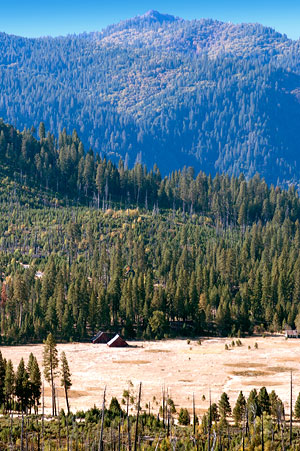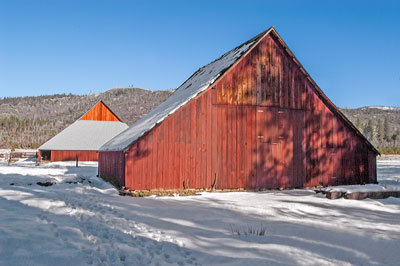National Register of Historic Places in Mariposa County
McCauley and Meyer Barns
Old Coulterville and Foresta Roads
Yosemite Valley
McCauley Barn Built 1883
Meyer Barns Built c1880
The McCauley and Meyer Barns are the last remaining barns in Yosemite which possess architectural significance and integrity.
The vernacular buildings differ from each other in form and design, but they are largely handcrafted and are nearly unchanged from their original appearance. Both the McCauley barn and the Meyer barn #2 are examples of an unusual California type known as the "Mormon Pole Barn" more often found in the Genessee Valley and dating from the 1850s.
George Meyer, a German born ship carpenter, took over his brother's homestead in Big Meadow in the 1870's. The meadow was considerably smaller than its present size before George cut trees and cleared brush.
Meyer probably built Barn #2 late 1870's and Barn #1 in the early 1880's. The walls of the latter barn were supposedly built flat on the ground and then raised in one piece. Meyer's ranch was a stage stop on the Old Coulterville Road and he supplied grains and vegetables to Yosemite Valley businesses. Meyer died in San Francisco in 1917 and was buried there.
The McCauley barn was built around 1883 by Irishman James McCauley, pioneer Yosemite trailbuilder and innkeeper. McCauley also built the Four Mile trail to Glacier Point in 1871 and the Glacier Point Mountain House in 1878. McCauley worked the ranch with his son, supplying beef to Yosemite Valley businesses, until his death in an accident on the old Coulterville Road in 1911. In 1923 his son, Fred, sold the property to Horace Meyer, son of George Meyer who built the Meyer barns.
The National Park Service has owned the barns since 1974.
Adapted from the NRHP nomination.

